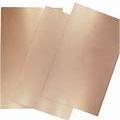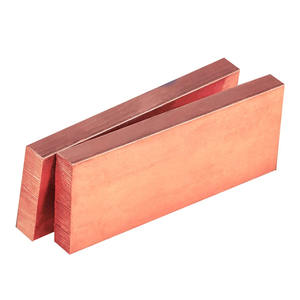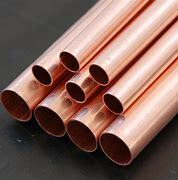1. Introduction
As of June 2024, copper prices remain strong—hovering around $8,500 per metric ton—making copper recycling more profitable than ever. A recent report from the International Copper Association highlights a 12% year-over-year increase in demand for recycled copper, driven by green energy infrastructure and electric vehicle manufacturing. This surge has sparked renewed interest in efficient copper recovery methods, especially among DIY recyclers and small scrap dealers. If you’ve got old wiring, motors, or even copper rod leftovers lying around, knowing how to properly strip copper wire can significantly boost your returns.

Stripping copper wire isn’t just about removing insulation—it’s about maximizing purity and value. Clean, bare copper fetches a much higher price than insulated or mixed scrap. Whether you’re dealing with thick copper rod for welding, thin copper strip wire, or coiled copper strip rolls, this guide will show you the best way to strip copper wire safely and efficiently.
2. Why Strip Copper Wire?
Unstripped copper wire typically sells for 30–50% less than clean, bare copper. Scrap yards categorize copper into grades: Bare Bright (highest value), #1 Copper (clean tubing or bus bars), and #2 Copper (with solder, paint, or light tarnish). Insulated wire often falls into a lower category or requires extra processing fees. By stripping your wire, you move it into a higher-value class—potentially earning you an extra $1–$2 per pound.
Additionally, many recyclers now reject burned wire due to environmental regulations. Burning copper wire for scrap releases toxic fumes and degrades copper quality, so it’s both unsafe and unprofitable. Proper stripping is the only sustainable and legal method.
3. Tools and Materials You’ll Need

- Wire strippers (manual or automatic)
- Utility knife or razor blade (for thick insulation)
- Heat gun (optional, for stubborn PVC)
- Bucket of soapy water (for cleaning)
- Safety gloves and goggles
- Sorting bins (for separating copper types like copper strip, copper rod, and copper tubing)
Note: Avoid using pliers or teeth—these can nick the copper, reducing its value. Also, never use open flames to burn off insulation.
4. Step-by-Step: How to Strip Copper Wire
4.1. Sort Your Wire First
Begin by separating your copper by type. Look for copper strip wire (flat, ribbon-like), copper rod (solid round bar copper), and standard insulated wiring. High-value items include copper earth strip 25x3mm, beryllium copper strip, and nickel plated copper strip. Keep flexible copper bus bar and copper alloy strip separate—they may have different pricing.

4.2. Manual Stripping for Small Batches
For short lengths or household wiring, use a manual wire stripper. Adjust the gauge setting to match your wire size. Squeeze and pull—the insulation should slide off cleanly. For thick copper rod or copper to copper welding rod, score the insulation lightly with a utility knife, then peel it back. Be careful not to gouge the metal underneath.
4.3. Mechanical Stripping for Bulk Wire
If you’re processing long runs—like stripping copper wire for scrap from demolition sites—invest in a cable stripper machine. These devices can handle everything from thin copper strip roll to 15mm copper pipe insulation. They’re fast, consistent, and preserve copper integrity. Many models auto-adjust for different diameters, making them ideal for mixed batches.
4.4. Heat-Assisted Stripping (Use with Caution)
For PVC-insulated wire that’s hard to peel, a heat gun can soften the coating. Hold the gun 6 inches away and rotate the wire until the insulation loosens. Then, use gloves to pull it off. Never overheat—this can oxidize the copper or melt the insulation onto the metal.
5. What to Do After Stripping
Once stripped, clean the copper with soapy water to remove grease or residue. Dry thoroughly. Sort into categories: Bare Bright (shiny, unoxidized), #1 Copper (includes clean copper round bar, copper tubing, and copper pipe fittings), and specialty items like copper clad steel ground rod or copper bonded earthing rod. Note: Copper bonded steel and copper clad earth rod contain steel cores—these are not pure copper and should be separated.
Store your stripped copper in labeled containers. When selling, bring a magnet—pure copper isn’t magnetic. If a piece sticks, it’s likely copper clad steel earth rod or another composite, which pays less.
6. Common Mistakes to Avoid
- Burning copper wire for scrap: illegal in many areas and reduces value.
- Mixing copper types: copper strip price differs from copper rod price; keep them separate.
- Selling unstripped wire: you’re leaving money on the table.
- Using damaged tools: nicks lower copper quality and scrap grade.
7. Where to Sell and Price Expectations
Check local scrap yards for current copper rod price and copper strip price. As of mid-2024, Bare Bright copper averages $3.20–$3.60 per pound, while unstripped wire may only fetch $1.80–$2.20. Search “copper strip near me” or “copper bars for sale” to find buyers. Some recyclers even offer pickup for large quantities of copper metal strips or copper ingot lots.
8. Conclusion
Stripping copper wire for scrap isn’t just a chore—it’s a smart financial move. With copper demand rising and recycling incentives growing, mastering the best way to strip copper cable ensures you get top dollar. Whether you’re salvaging copper from old aircon copper pipe, dismantling motors, or repurposing copper earth rods, clean, bare copper always wins. Start small, invest in the right tools, and soon you’ll turn waste into worth—one stripped wire at a time.
Our Website founded on October 17, 2012, is a high-tech enterprise committed to the research and development, production, processing, sales and technical services of ceramic relative materials such as How. Our products includes but not limited to Boron Carbide Ceramic Products, Boron Nitride Ceramic Products, Silicon Carbide Ceramic Products, Silicon Nitride Ceramic Products, Zirconium Dioxide Ceramic Products, etc. If you are interested, please feel free to contact us.

